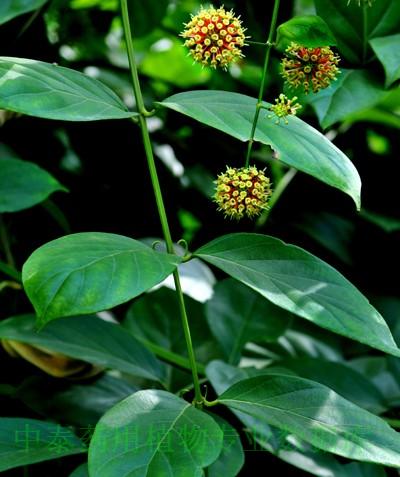| [English Name] | Uncaria.macrophylla | |
| [Chinese Name] | 大叶钩藤 | |
| [Pinying Name] | Dayegouteng | |
| [Latin Name] | Uncaria.macrophylla Wall | |
| [Genera] | Rubiaceae | |
| [Efficacy] | pingganxifengyao | |
| [Pictures] | Plant picture | Drug picture |

|
|
|
| [Alias] | ||
| [Source] | ||
| [Plant morphology] | ||
| [Distribution] | ||
| [Gathering and processing] | ||
| [Characteristics] | ||
| [Ecology] | It grows in bushes or miscellaneous wood. | |
| [Chemical composition] | ||
| [Pharmacological activities] |
Hypotensioneffect: Captopril group, the high dosegroup compared respectively the pre-experimental blood pressure decreasedsignificantly (P<0.05), and with the blank control group. Captopril group, thelow-dose group were significantly different (P<0.05), there was nosignificant difference in Captopril group and the high-dose group(P>0.05); Blankcontrol group, Captopri group, the low dose group was no significantdifference(P>0.05) [1]. |
|
| [Clinical trial] | ||
| [Properties] | ||
| [Medical and other Uses] | ||
| [Dosage] | ||
| [Cautions] | ||
| [Traditional usage] |
1. Eczema of scrotum 2. Headache with tinnitus 3. Nephritic edema 4. Dysuria caused by qi and yin deficiency 5. Chronic hematodiarrhea 6. Erysipelas 7. Sore 8. Eczema, prurigo 9. Acute mastitis 10. Stranguriaduring pregnancy, frequent but short urine with sudden pain and sore, pain onhands and feet |
|
| [Toxicological studies] | ||
| [Pharmaceutical preparations] | ||
| [References] |
Pharmacological Actions: |
|